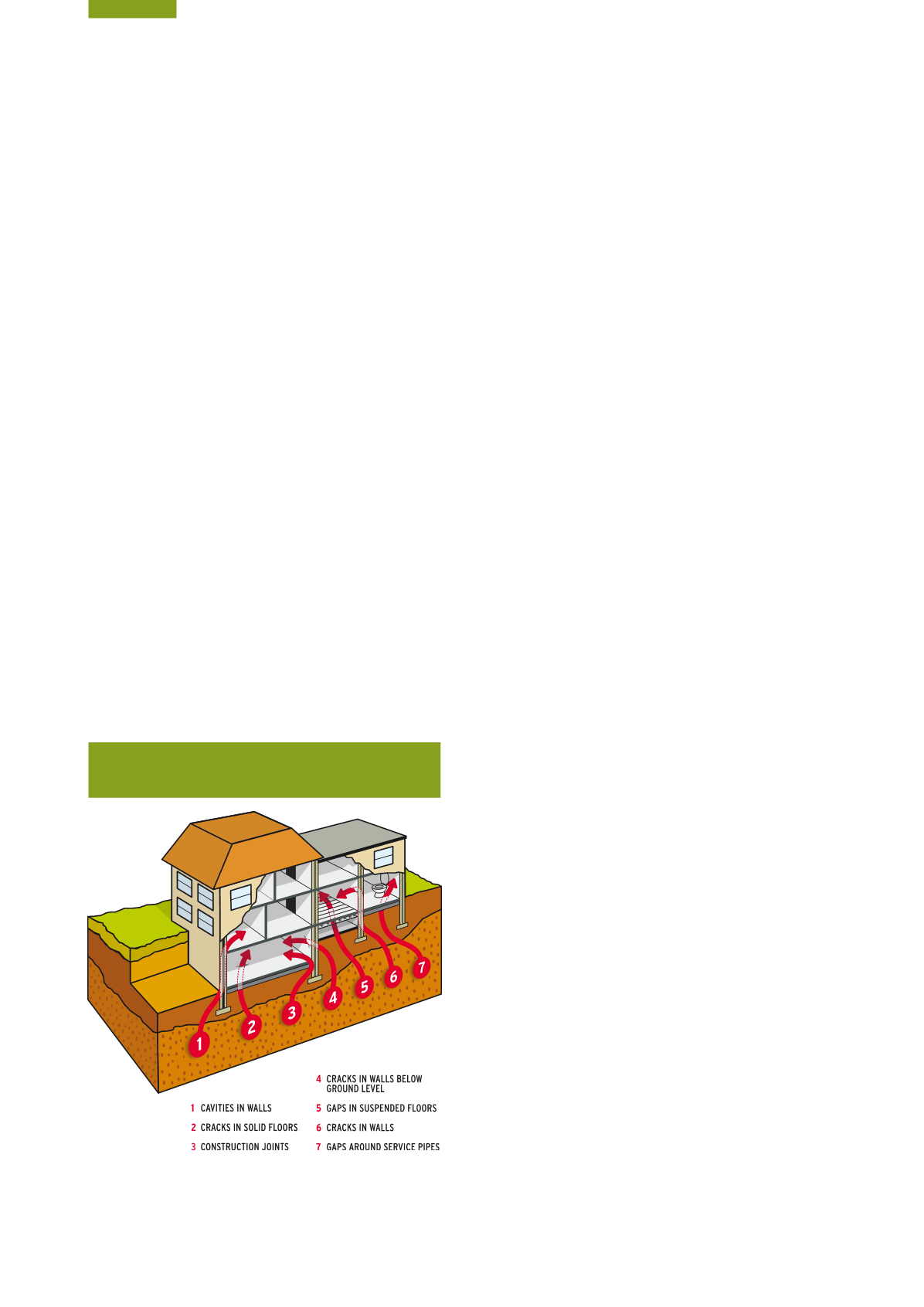

Ireland’s Environment – An Assessment 2016
138
present in the marine environment do not warrant any
modification of the daily habits of people in Ireland, either
in their consumption of seafood or in any other use of the
amenities of the marine environment.
Radon
Indoor radon exposure remains a significant public
health concern.
Radon is a naturally occurring radioactive gas formed
in the ground by the radioactive decay of uranium,
which is present in all rocks and soils. It is the greatest
source of exposure to ionising radiation for the general
public in Ireland and the leading cause of lung cancer
after smoking. It is estimated that exposure to radon
accounts for approximately 13% of all lung cancers in
Ireland, which equates to some 250 lung cancer cases
each year.
High radon concentrations can be found in any
part of the country; however, the EPA has identified
certain areas which are more prone to radon as High
Radon Areas. The EPA regularly runs local awareness
campaigns in High Radon Areas in order to raise
awareness of the risks from radon and to encourage
homeowners to test their homes. To date, only 60,000
homes have been tested, of which almost 8,400 were
found to be above the national reference level of
200 Bq/m
3
. Figure 8.9 shows the routes of entry for
radon into buildings.
Figure 8.9
Radon Entry Points
(Source: EPA,
www.radon.ie)Recognising the scale of the radon problem in Ireland,
the Government published the 4-year National Radon
Control Strategy in February 2014, which contains
recommendations on a broad range of measures aimed
at reducing the risk from radon to people living in Ireland.
These recommendations are set out in six thematic areas
as follows:
n
radon prevention in new buildings;
n
use of property transactions (sales and rental) to drive
action on radon;
n
raising radon awareness and encouraging individual
action on radon;
n
advice and guidance for individual householders and
employers with high radon results;
n
promoting confidence in radon services; and
n
addressing radon in workplaces and public buildings.
The results of the 2015 National Radon Survey show that
mean indoor radon concentration has fallen to 77Bq/m
3
(from 89Bq/m
3
in 2002). Furthermore, a significant
reduction in radon levels was found in homes built since
1998, when radon preventative measures were introduced
under the Building Regulations, as compared with those
homes built before then. This gives a strong indication that
the required radon preventative measures in new homes
are having a beneficial effect on indoor radon levels. In
addition, further work to tackle radon in workplaces will
be carried out through the implementation of EU Council
Directive 2013/59/Euratom, which lays down basic safety
standards for protection against the dangers arising from
exposure to ionising radiation.
Non-ionising Radiation
Non-ionising radiation is the term used to describe the
part of the electromagnetic spectrum covering two main
regions, namely optical radiation (ultraviolet, visible and
infrared) and electromagnetic fields (power frequencies,
microwaves and radio frequencies).
Electromagnetic fields (EMFs) are associated with electricity
flows, and both electric and magnetic fields exist close
to power lines, and close to appliances. Since the 1970s,
research has been under way to examine if exposure to
EMFs has adverse health consequences. In 2015, an EU
scientific committee published a Final Opinion on the
potential health effects of exposure to EMFs (SCENIHR,
2015). It concluded that there are no evident adverse
health effects associated with EMF if exposure remains
below the levels recommended by EU legislation (EC,
2015). The findings of this committee were echoed in a
study carried out by the Dutch National Institute for Public
Health and the Environment, which looked at EMFs in the
Irish context and also investigated how different Member
States differ in how they deal with European exposure
limits (RIVM, 2015).


















